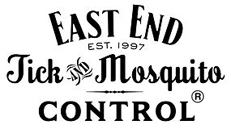Ticks are a problem everywhere in the United States, but one region in particular stands out as a hotbed of tick activity and tick-borne diseases: the Northeast.
It’s a perfect storm of factors that make our tick risk higher than everywhere else. We have multiple tick species prevalent, lots of tick-friendly environments to live, feed, and reproduce, and extremely high tick population densities in those environments.
Top 5 States with the Worst Tick Problems
- Pennsylvania
- New York
- New Jersey
- Conneticutt
- Massachusetts
Yes, unfortunately, New York state – including Long Island and, specifically, Suffolk County – is rife with ticks that transmit dangerous illnesses. Bottom line: you’re more likely to get bitten by a tick and get infected with a tick-borne disease here than anywhere else.
At East End Tick & Mosquito Control®, we’re always ready to help you with your pest control needs. Contact us for a free, no obligation quote, or call us at 631-287-9700 to get started today.
What States Have the Most Ticks with Lyme Disease?
Lyme disease has been reported in nearly every state. This potentially debilitating disease is carried by blacklegged ticks, which are found in many parts of the country, but are especially prevalent here on Long Island.
According to the Centers for Disease Control (CDC), the states with the highest prevalence of Lyme disease cases are Pennsylvania, New Jersey, and New York.
States with the Most Tick-Borne Lyme Disease

- Washington, D.C.
- Pennsylvania
- New Jersey
- New York
- Connecticut
- Delaware
- Maine
- Maryland
- Massachusetts
- Minnesota
- New Hampshire
- Rhode Island
- Vermont
- Virginia
- West Virginia
- Wisconsin
What States Have the Most Ticks with Heartland Virus?
Heartland virus is an emerging health threat spread by the Lone Star tick. Characterized by flu-like symptoms, low white blood cell counts, low platelet counts, and possible liver dysfunction, Heartland virus occurs primarily (as its name suggests) in the Midwest and South. However, there is an additional cluster in New York and Pennsylvania.
While there was some heightened concern recently that Heartland virus was becoming common in New York and the rest of the Northeast, those fears have subsided somewhat. It is a risk, but it’s still relatively rare here.
States with the Most Tick-Borne Heartland Virus

- Virginia
- Arkansas
- Georgia
- Illinois
- Indiana
- Iowa
- Kansas
- Kentucky
- Missouri
- New York
- North Carolina
- Oklahoma
- Pennsylvania
- Tennessee
What States Have Ticks with Alpha-gal Syndrome?
Alpha-gal syndrome is a dangerous meat allergy transmitted by the Lone Star tick. Alpha-gal carrying ticks are most often found in southern and Midwestern states. There are a few areas outside of these states with a high number of alpha-gal cases, and, unfortunately, Long Island’s East End is one of these.
In fact, Suffolk County is a hotbed of alpha-gal transmission, with thousands of reported or suspected cases. It’s becoming more common – and will continue becoming more and more common as lone star ticks spread in the region.
States with the Highest Prevalence of Alpha-Gal Syndrome Cases
- Virginia
- Arkansas
- Delaware
- Illinois
- Indiana
- Kansas
- Kentucky
- Maryland
- Missouri
- Mississippi
- North Carolina
- Oklahoma
- Tennessee
What State Has the Least Ticks?
States with the fewest ticks and tick-borne diseases have relatively warm or dry climates, are isolated or located in the Western part of the country, or have limited wooded areas where ticks are known to thrive.
However, it’s important to remember – ticks are still present even in states where there are few of them. Ticks are everywhere – even in Hawaii and Alaska.
Top 10 U.S. States with the Fewest Ticks
- Hawaii
- Alaska
- Arizona
- Colorado
- Idaho
- Montana
- Nevada
- North Dakota
- Utah
- Wyoming
Remember, it’s rarer, but these states also may be home to Lyme-bearing ticks, especially in foothill and forested areas. Wherever you go, it’s important to be tick-aware, to check for ticks after spending time outdoors, and to know the signs of tick-borne illness if you are bitten by one.
Why Are Ticks So Dangerous on Long Island?
Long Island’s severe tick danger is caused by a unique convergence of factors:

- Ideal “Edge” Habitat: Suburban yards bordering fragmented woods maximize tick-and-host-animal interactions.
- Abundant Wildlife Hosts: Massive, concentrated populations of deer (for tick reproduction) and white-footed mice (for disease transmission).
- Favorable Climate: Our relatively mild seasonal temperature fluctuations increase tick survival rates and lengthen their active season.
Here in New York (and, in fact, in every state in the Northeast from Maine to Virginia), you should be on high alert for ticks. Make sure to check yourself, pets, and children for ticks after spending time outdoors – especially in wooded areas in the summer.
All of these tick species are common here on Long Island:
- Blacklegged Tick (Deer Tick): One of the most common types of ticks, and possibly the most dangerous. Known to carry Lyme Disease, Anaplasmosis, Babesiosis, and more.
- Lone Star Tick: Native to the South, but rapidly expanding its territory in the Northeast. Known for transmitting Alpha-gal Syndrome (Red Meat Allergy), Ehrlichiosis, Southern Tick-Associated Rash Illness (STARI), Tularemia, Heartland Virus, and more.
- American Dog Tick (Wood Tick): Major carrier of Rocky Mountain Spotted Fever (RMSF) and Tularemia.
- Brown Dog Tick: Able to transmit Rocky Mountain Spotted Fever (RMSF).
East End Tick & Mosquito Control® Can Set Up a Tick-Free Perimeter
Ticks are dangerous in many parts of the United States, but here in New York, tick activity and tick-borne illnesses are at an extremely high level. You can reduce your risk by clearing your yard of debris that can harbor ticks, and by calling our tick control experts to set up a tick-free perimeter around your property.
East End Tick & Mosquito Control® is proud to be the top choice for Long Island families seeking protection from tick threats for more than 25 years, and you can trust us to do the same for you.
Is it time to protect your home and your family from the dangers of ticks? Contact us today for a free estimate.


